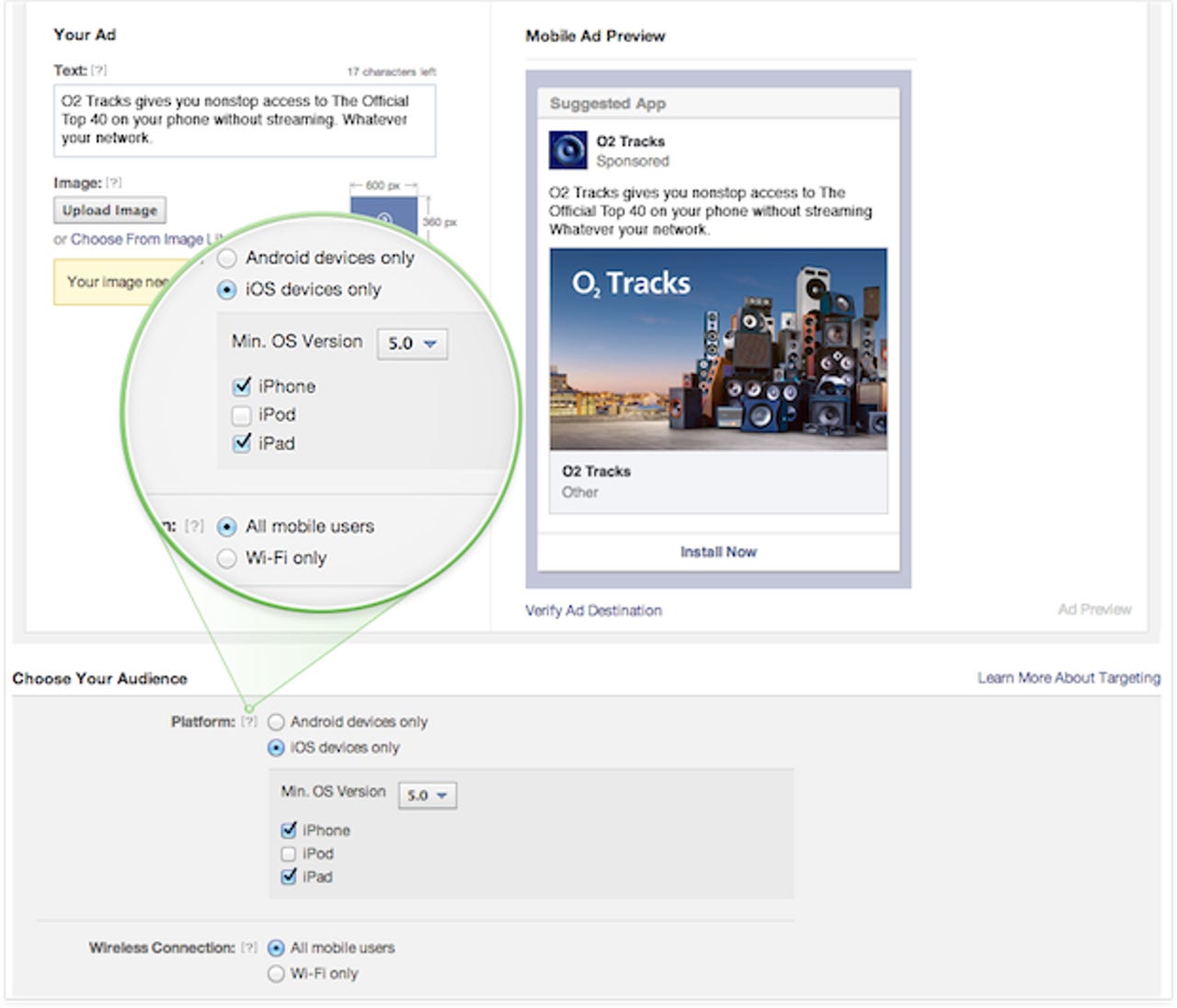Facebook updates mobile app install ads process for developers


It's been a busy week for Facebook as it has been rolling out a number of new releases and upgrades designed to streamline the desktop and mobile app creation process for developers.
See also: Facebook previews local currency pricing for developers
Announced amid the 2013 Game Developers Conference in San Francisco this week, the latest release is for the mobile app install ads scheme, which was first introduced less than a year ago.
The upgrades are twofold. First, Facebook bumped up device targeting so that the system can now identify specific versions of iOS and Android (i.e. Jelly Bean 4.2 vs. iOS 5.0 and greater) as well as those that are only connecting via Wi-Fi.
This could be incredibly fruitful for developers (and the marketing teams they work with) when it comes to tailoring mobile ads and promotions for individual consumers.
Facebook software engineer Calvin Grunewald added another example in a blog post on Wednesday, suggesting this could be helpful if "you are interested in connecting with iPad users that only have Wi-Fi access or prefer using Wi-Fi for data usage."
Second, the Menlo Park, Calif. company is adding the option to create and buy mobile app install ads from its Ads Create Tool.
Only a six-step process, the Ads Create Tool was designed to enable developers to manage large volume campaigns with specific demographics in mind. Those options range from targeting mobile to desktop users while also setting budget limits to manage installs.
For developers interested in learning more about the new install ads process, Facebook is hosting a live, online Q&A session on April 17 with the team behind the project.
Image via The Facebook Developers Blog